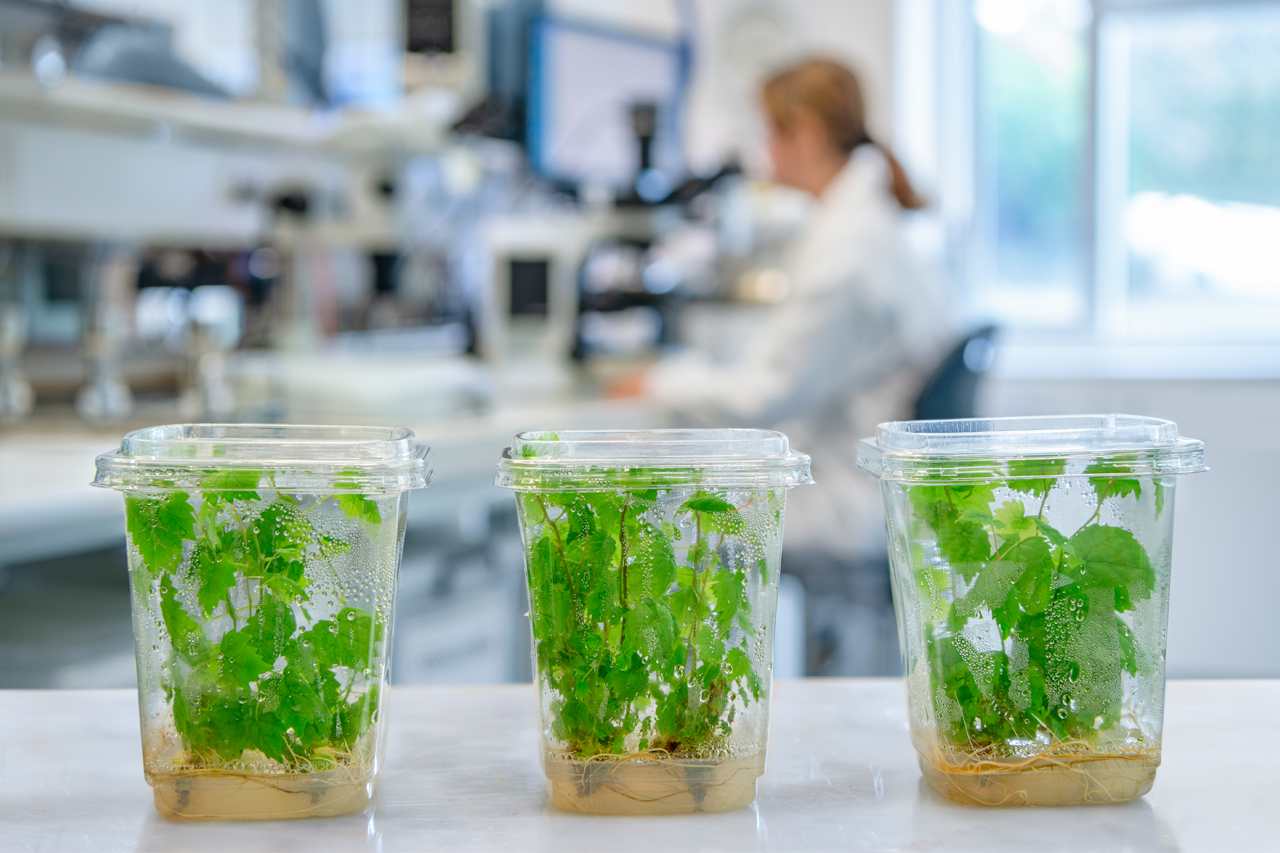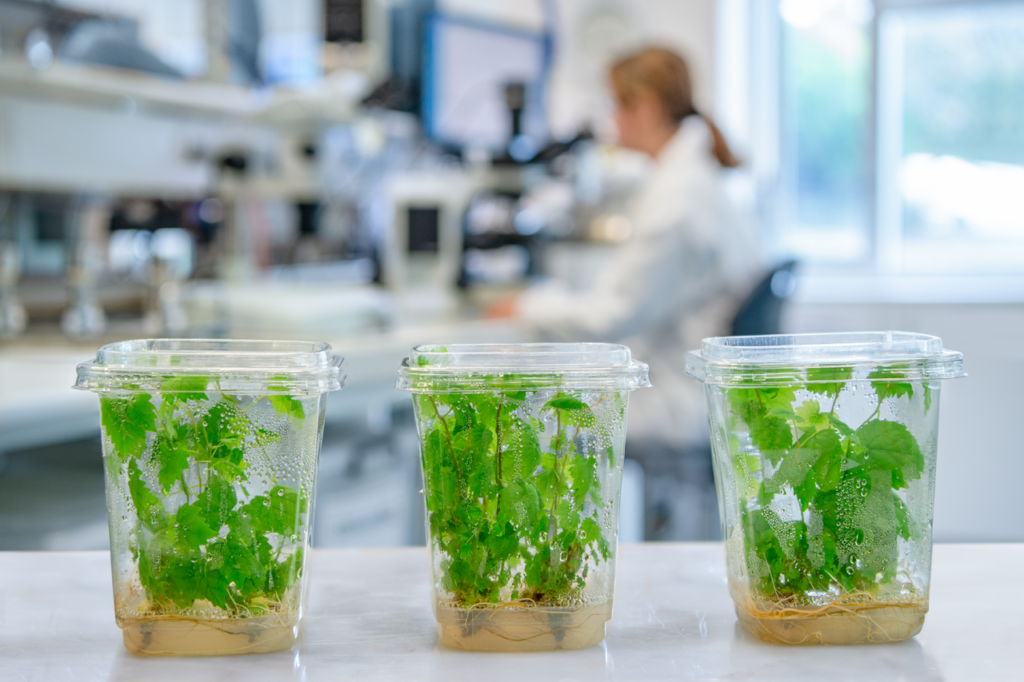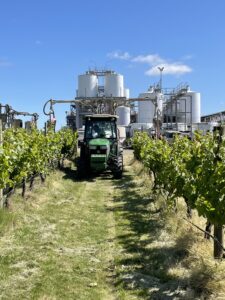
Grapevine viruses can shorten the life of infected grapevines and reduce both the quality and yield of grapes. Several viruses have been associated with graft incompatibility. In some cases, especially in many white grape varieties and non-vinifera rootstocks, virus-infected vines do not show symptoms, but the virus can spread to susceptible neighbouring vines and vineyards. Some viruses can spread from infected vines to neighbouring vines through movement of insect vectors. Viruses are also spread when infected vines are topworked or used as rootstocks. It is important to test propagation material prior to planting or grafting to avoid the risk of introducing or spreading viruses. Virus testing is also a useful tool to help diagnose poor-performing grapevines and to detect and manage infections before they become a serious problem.
The reason for testing determines the best approach for sampling grapevine material for virus diagnostics. This document presents sampling strategies based on the best current available information. Discuss any deviations from this sampling guide with us to determine if it could affect the accuracy of results. The testing laboratories will test samples as they are received and cannot guarantee the virus status of any other material that has not been tested.
Sampling strategy
Virus testing can be carried out on individual vines or on composite samples from multiple vines. The number of vines within each composite sample will depend on the reason for testing.
Testing a block with symptomatic vines
If you are sampling a block with symptomatic vines, collect samples from the vines showing symptoms. Up to ten vines worth of symptomatic material can be pooled into one composite sample (see in-field sample collection section for more detail).
Vines only recently infected may appear symptomless while still harbouring the virus and be a reservoir for further spread. It is therefore recommended to test symptomless vines neighbouring symptomatic vines which are confirmed to be infected with an insect transmitted virus.
- Green shoots or canes from up to five symptomless vines can be pooled together into one composite sample (see in-field sample collection section for more detail). This is to ensure test sensitivity for detection of a single positive sample within the composite sample.
- All neighbouring vines within a ring around known or symptom expressing vines should be tested. This is illustrated in Figure 1.
Always ensure that symptomatic vines are kept separate from symptomless vines when pooling samples for composite testing.
Testing a block with symptomless vines
Virus infected vines can occur in a non-uniform manner in a vineyard and it is important to test representative vines that are spread across the vineyard. The more vines that are tested, the higher the level of confidence that the results are representative of virus prevalence in the block. Green shoots or canes from up to five symptomless vines can be pooled together into one composite sample. Figure 2 shows one sampling method that can be used in a block which results in testing of 25 per 500 vines using smaller and a larger star-like pattern. This equates to five composite samples each comprising of shoots or canes from five vines.


Preparation
Items you will need
| Flagging tape | Plastic sample bags | Snips | Sampling record sheet |
| Permanent marker | Paper towel (unscented) | Gloves | Phone/camera |
Timing of sample collection
- Sampling can occur at any time of the year except in hot regions.
- If the vineyard is located in a hot region it is recommended to avoid sampling during the hottest months (i.e. Jan – March) as virus concentration may be reduced to an undetectable level. Hot regions are classified as having a mean January temperature (MJT) of ≥22oC. Based on long-term data from 1991 – 2017 this includes regions in:
- New South Wales: Cowra, Gundagai, Hastings River, Hilltops, Hunter, Murray Darling, Mudgee, Orange, Peel, Perricoota, Riverina
- Queensland: South Burnett
- South Australia: Adelaide Plains, Barossa Valley, Riverland, Southern Flinders Ranges
- Victoria: Bendigo, Clare Valley, Glenrowan, Goulburn Valley, Heathcote, Murray Darling, Rutherglen
- Western Australia: Geographe, Margaret River, Perth Hills, Swan District
- Australian wine regions and varieties
- If testing is critical during these months in any region, then it is imperative that the plant material is kept cool immediately post sampling and in transit to the laboratory as high temperatures will affect the integrity of the material, which can negatively impact test performance. Poor quality material cannot be tested. Negative test results cannot be guaranteed if poor quality material is tested.
- If samples will be mailed to the testing laboratory, collect samples from Monday to Wednesday and send as soon as possible after collection to ensure they reach the laboratory by the weekend.
- If samples are hand delivered, they can be collected on any day but should arrive at sample reception no later than 4pm on any day of the same week.
In-field sample collection
Locate and record location of your first target vine to sample
- Locate your first target vine.
- Place flagging tape around the vine trunk at dripper height. Write the ‘target vine number’ on the flagging tape.
- On your ‘Virus sample record sheet’, record details against the target vine number so you can locate it again:
- row number
- vine number or panel vine number (e.g. 20.3 which means 20 panels in and third vine in the panel)
- end of the row that you entered and started counting from
- photo number to record observed symptoms (if applicable)
Collecting the green tissue
- Choose at least two shoots per vine for testing, one from each side of the trunk of the target vine
- These primary shoots can be from any location on the cordon close to the crown/head, but if from a symptomatic vine, select shoots with symptoms.
- Shoots from the shaded side of the vine are optimal.
- Remove the chosen shoot completely from the vine being careful to keep it intact.
- You may be able to snap the shoot off or use snips to cut it at the base depending on the size of the shoot.
- Trim the shoot so that you have a 20-30cm basal section.
- Do not remove the leaves from the shoot.
- You may choose to wear gloves to collect the samples to avoid spray residue.
- Place the shoots in the sample bag.
- Repeat steps 1 to 6 for the next four target vines placing the 10 green shoots into the same plastic sample bag.
- Wrap the shoots together in dry paper towel and seal the sample bag. Do not use wet paper towel.
- Label the bag with a sample ID and record this on your ‘Virus sample record sheet’.
- Repeat steps 1 to 9 for each set of five target vines remaining in the block or area to be sampled.
- If you want to be able to traceback the result to each individual target vine, rather than from the pooled sample of five vines, you will need to bundle together the two or more shoots from one vine and label with the target vine number. Bundling could be shoots of each vine placed in a separate bag or by tying together and labelling the bundle of shoots from one vine, and then placing the separately bundled shoots from five vines in one bag.
As virus titre and plan material integrity may be sub-optimal, it is recommended that sampling does not occur on a hot day (i.e.35oC) and to wait a week post hot weather to negate any decreases in virus titre.
Sample handling and delivery
- Keep samples cool during in-field sample collection (e.g. store in an esky with ice).
- Keep samples cool (e.g. refrigerator) prior to sending – it is best to send samples to the testing laboratories within a few days of collection.
- Ensure the appropriate paperwork is completed as required by the testing laboratory. In some instances, if samples are being sent interstate or from a Phylloxera Infested Zone or a Phylloxera Risk Zone, additional documentation will be required.
- Deliver or send samples by courier or express post to the testing laboratory.
The Grapevine tissue sampling protocol for virus diagnostics have been developed as a collaboration between Australia’s grapevine virus testing laboratories – Affinity Labs (Adelaide), Crop Health Services (Melbourne) and DPIRD Diagnostic Laboratory Services (Perth).



